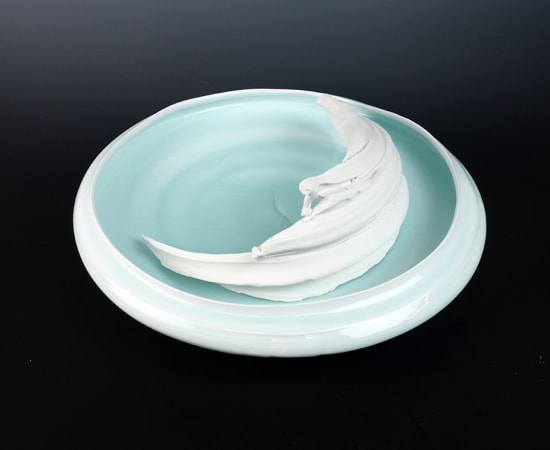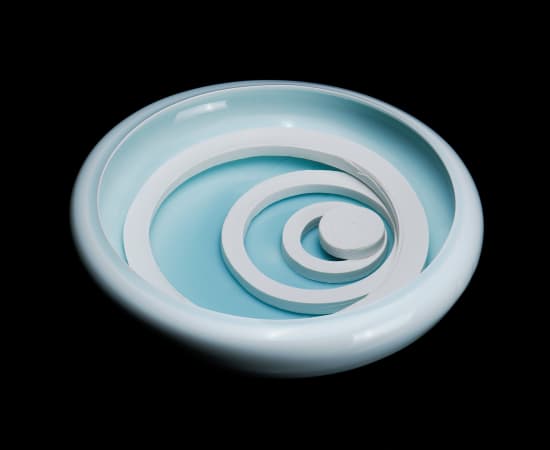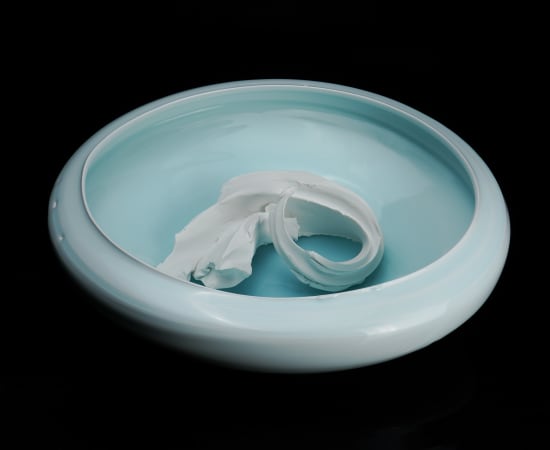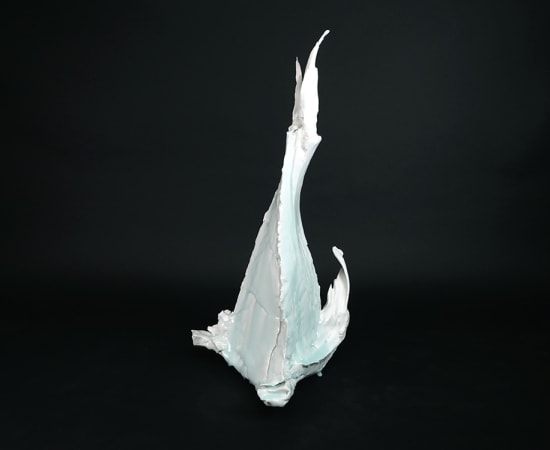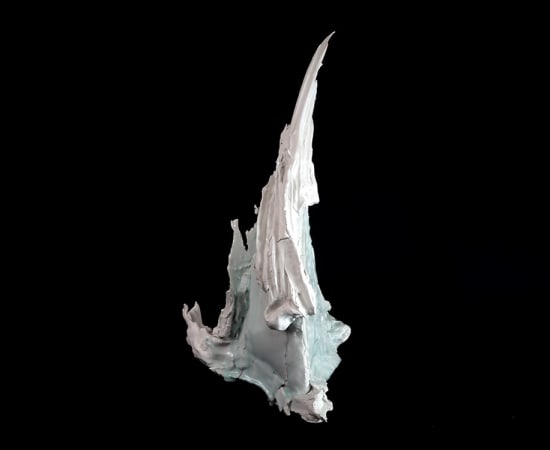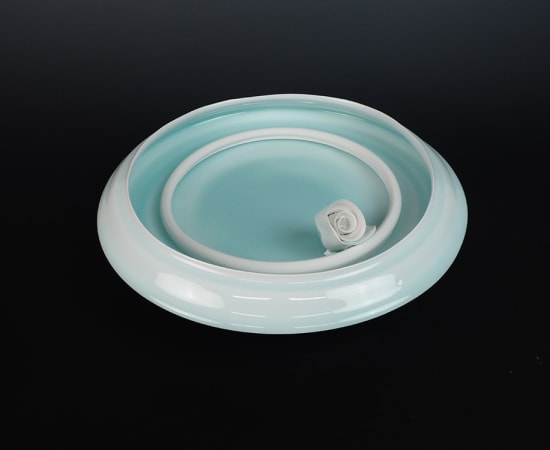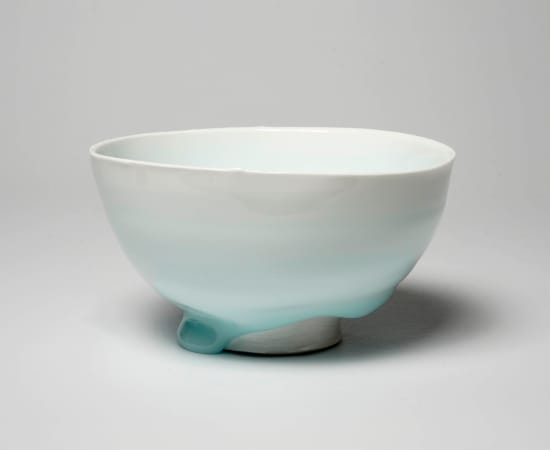Porcelain is traditionally associated with refinement: delicate, serene, elegant, tranquil: in short, perfect. Kato Tsubusa’s work in white porcelain, often accented with a whisper of pale blue celadon glaze, is equally beautiful, but radically different. Rather than stillness, his porcelain embodies motion; rather than luxurious elegance, it embraces daring form. His sculptures sweep dramatically through space, challenging the expectation of porcelain’s calm restraint. A few works take the form of “vases” or “platters,” though their razor-sharp edges and daunting fragility make them more provocations than practical objects. Since the age of 21, Kato had devoted himself exclusively to the demanding medium of white porcelain clay.
Kato embraced the challenge of porcelain at its most difficult and fragile, shaping long, unsupported strips of clay into forms that seem to defy gravity. These elongated gestures recall calligraphic strokes, alive with movement. Serrated, knife-like edges—his signature—suggest glacial landscapes, while the surfaces evoke the translucent shimmer of minerals, paradoxically rendered through an opaque medium. In these works, Kato revealed the extraordinary versatility of clay, pushing porcelain beyond tradition into uncharted sculptural expression.
Kato passed away unexpectedly in September 2025 at the age of 63, leaving behind a body of work that forever altered the language of contemporary porcelain.
